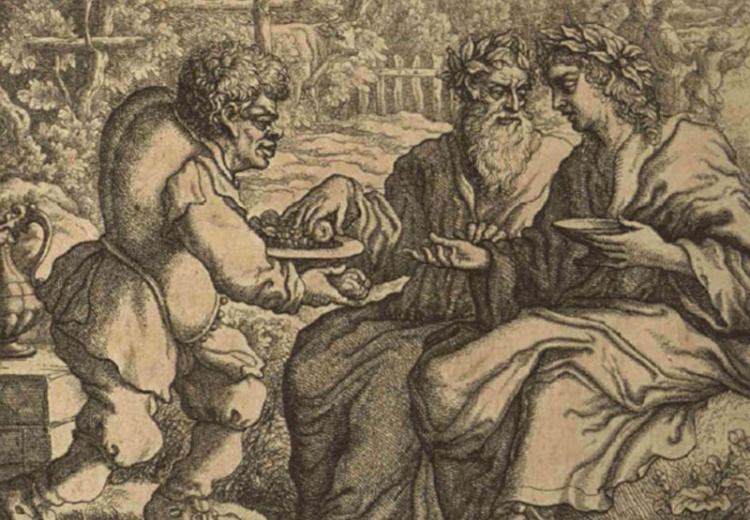Aesop and Ananse: Animal Fables and Trickster Tales

The 1687 edition of Aesop's Fables with His Life.
"Through these stories we visit with our ancestors as we receive and, in turn, pass on their wisdom through the millennia."
-From IAHBING, The Talking Drum
Fables and trickster tales are short narratives that use animal characters with human features to convey folk wisdom and to help us understand human nature and human behavior. These stories were originally passed down through oral tradition and were eventually written down. The legendary figure Aesop was reported to have orally passed on his animal fables, which have been linked to earlier beast tales from India and were later written down by the Greeks and Romans. Ananse trickster tales derive from the Asante people of Ghana and were brought by African slaves to the Caribbean and parts of the U.S. These tales developed into Brer Rabbit stories and were written down in the 19th century in the American South.
In this unit, students will become familiar with fables and trickster tales from different cultural traditions and will see how stories change when transferred orally between generations and cultures. They will learn how both types of folktales employ various animals in different ways to portray human strengths and weaknesses and to pass down wisdom from one generation to the next. Use the following lessons to introduce students to world folklore and to explore how folktales convey the perspectives of different world cultures.
This unit is related to the lesson Fables and Trickster Tales Around the World, which provides the same background information for the teacher with different activities appropriate for students in grades 3-5. Please note that different versions of spellings of “Ananse” and “Anansi,” and of “Asante,” “Ashante,” and “Ashanti” exist.
Guiding Questions
What is a fable, and how are fables different from other types of stories?
What is a trickster tale, and how is it different from other types of tales and from fables?
What are the elements common to fables and trickster tales?
Where does each of these types of stories come from?
How have fables and trickster tales been passed down through time and around the world?
What kinds of wisdom about human nature and human behavior do we learn from fables, and how is this wisdom relevant today?
Learning Objectives
Identify the definition and understand elements of fables and trickster stories
Recognize Aesop's fables and Ananse spider stories
Identify the specific narrative and thematic patterns that occur in fables and trickster tales across cultures
Compare and contrast themes of fables and trickster tales from different cultures
Differentiate between the cautionary lessons and morals of fables and the celebration of the wiles and wit of the underdog in trickster stories
